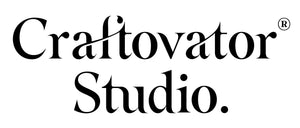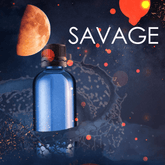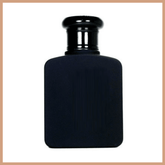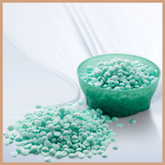Assessments & CPSR: How to Sell Bath & Body Products in the UK
We are so excited to now be offering to our customers a choice of flexi style cosmetic safety assessments (CPSR). From melt and pour soap to liquid wash, whipped soap, bathbombs, perfumes and more, we’re now offering a wide assortment of products to allow you to create and sell your handmade products but more importantly, have the legal assurance that they have been assessed by our certified assessment partner.

Buy Our 3-in-1 Liquid Wash Assessment Here
Our safety assessments will allow you to create a wide range of bath and body products where each recipe and its variants have been declared as safe and compliant to UK/EU specifications.
This allows a small business/crafter to create their own finished product using the recipe and ingredients from our assessment packages. You will not have to submit any recipes or made products for assessment yourself, cutting out the stress out of submitting a cosmetic safety assessment.
However, there are still a few very important things you need to do to be able to legally sell your products and our post today will walk you through everything you need to know so you can soon be selling your assessed products safely and legally.
Although our assessments comply with the EU regulations, the following information is only applicable for selling your products within the UK. To sell your products from the UK to the EU, there are additional requirements that will need to be met so you may need to do additional research to comply.
What do I need to do to sell handmade bath and body products legally within the UK?

Buy our Melt & Pour Soap Assessment Here
Here is a brief summary of what steps you need to take to be able to legally sell your products. We’ll be breaking these down individually as you read on.
- Purchase your product assessment. This is also known as a CPSR, Cosmetic Product Safety Report.
- Register as a Responsible Person with the OPSS (Office for Product Safety and Standards). This is also known as The Cosmetics Portal. You’ll be required to notify the OPSS of every product variant that you make.
- Produce a Product Information File (PIF)
- Include a GMP (Good Manufacturing Practice) Statement
- Batch Logging
- Labelling
- Register with HMRC
- Get Insurance. When selling products, you need insurance in place to safeguard yourself.
Purchasing Your Product Assessment

Purchasing one of our product assessments could not be easier. Once the purchase has been made, you will receive a submission form via email. This is where you will enter your personal details so that the assessor can write these on the report.
You will then receive a digital file containing the recipe and method for making the products. This means you will be able to purchase the ingredients and practice making while you wait for your assessment report.
Once you have received your product safety report, you are ready to move onto the next steps.
What Does a “Responsible Person” Do?
The Responsible Person is the individual or company responsible for ensuring the regulations are followed. Every cosmetic product placed on the UK market must have a Responsible Person.
For small scale producers, the responsible person is usually the maker/manufacturer (you), but this can also be an employee of your business who takes on this role.
The Responsible Person must make sure the cosmetic products they make available are safe. The Responsible Person should:
- Know which ingredients are used in their cosmetic product, including those which are harmful or nanomaterials
- Keep an up-to-date document with information on the cosmetic product (called the ‘Product Information File’ or ‘PIF’ - we will talk about this next!)
- Make any information on the packaging, labelling and instructions for the cosmetic product clearly visible
- Let the Office for Product Safety and Standards (OPSS) know about the cosmetic product (called “notification”) before it is made available to consumers
- Tell OPSS about any serious harmful effects which are reported about the cosmetic product
- Be able to prove that any claims made when marketing the product are correct
How to Notify the OPSS

Buy our OPC Whipped Soap Assessment Here
Once you have set up an account with the OPSS portal, you will need to add your cosmetic products.
You can do this here: Cosmetic Product Notifications Service (gov.uk)
If you are a small-scale producer, you will need to have a file ready that includes a picture of your product label (jpeg) and a PDF file with either the formulation in the exact concentrations as per your safety assessment or a banded formulation. (There is another option available for a frame formulation, but this is not really suitable for the small-scale producer.)
A new notification will need to be added for every single variant of the product you make.
You will only need to do this once for each product, not for every batch you make. However, if, for example, you change the label or the colour of your product, you will need to re-upload the changed details.
What’s Included on the Product Information File (PIF)

Buy our Bath Bomb Assessments here.
The Responsible Person must keep a PIF in English for all their cosmetic products. The PIF must include:
- A detailed description of the cosmetic product.
- The ingredients of the product.
- Name and place of manufacture.
- Packaging and labelling. Pictures of the products, labelling and packaging may be included here.
- Cosmetic Product Safety Report (CPSR).
- Description of the production method compliant with GMP.
- GMP statement. Practical things that can be done to apply good manufacturing practices are:
- Ensure the place cosmetic products are manufactured is regularly maintained and cleaned
- Make sure all producers/staff have appropriate training and skills for cosmetic product manufacture
- Maintain personal hygiene
- Use correct PPE
- No smoking, eating, or drinking in the work area
- Adequate ventilation to be maintained
- Equipment to be cleaned and stored immediately after use
- Equipment will be kept separate from that used for food preparation
- Make sure the place cosmetic products are manufactured is set up to reduce the risk of products and raw materials mixing
- Make sure equipment used for manufacturing is regularly maintained and avoids cosmetic product contamination
- Ensure raw materials and finished products are stored safely, in suitable containers and are stored a suitable environment
- Know comprehensive information on supply chains for raw materials so any problems can be traced
- Give a cosmetic product a batch number and label
- Make sure the quality of the product is maintained in storage, when being shipped and also when being returned
- Record and justify changes to the manufacturing process
- Use quality control as a way to find if a cosmetic product, raw materials, or items used for packaging change unexpectedly
- Know and define the different types of waste generated during manufacture
- Identify and dispose of waste in a controlled and sanitary way
- Investigate any complaints or problems with a cosmetic product. This includes looking at measures which need to be taken to prevent problems happening again. It also includes verifying batches which have been affected by problems
- Perform internal audits to ensure these steps are being correctly implemented
- Ensure there is up to date documentation in place to show what happens during manufacture, quality control, storage, and shipment of cosmetic products. Examples would include protocols and methods
- Raw material quality and purity. Raw material manufacturers material safety data sheets (MSDS), specifications and certificates of analysis
- Animal testing declaration. You need to confirm that neither the raw ingredients nor the finished product have been tested on animals. For raw materials, the supplier should have these available.
- Evidence of the cosmetic product effects. The labelling and advertising of cosmetic products must not imply they have characteristics or functions which they do not have.
- Undesirable effects & serious undesirable effects. If your product has any undesirable or serious undesirable effects, they will need to be recorded.
The PIF must be kept for 10 years after the last batch of the cosmetic product was made available.
What is Batch Logging?
You need to keep a detailed log of all the batch numbers of all raw ingredients and be able to link these to the finished product. This is for traceability purposes should you come across any problem with an ingredient or product.
You will also need to give each batch of your product a batch number/code. Again, this is for traceability purposes should you have to recall any products or have a raw ingredients batch recalled.
What’s Included When Labelling Cosmetic Products

Buy our Perfume Assessments here.
The labelling for cosmetic products must be easy to read. The container and any packaging must be labelled with:
- The name and address of the Responsible Person
- The weight or volume (N/A for a single-use product such as a bath bomb)
- The date until which the cosmetic product can be used
- Any precautions for use
- An identification number (for example, a batch number)
- What the cosmetic product is or does (if this isn’t clear from the product name/presentation)
- The ingredients: A list of ingredients under the word ‘Ingredients’ in descending order of weight at the time they were added (they can go in any order if less than 1%). All declarable allergens and CI numbers for the colourants must also be included. This information should be on your assessment (CPSR).
When It comes to the best before date/minimum durability of a product, this can differ from product to product. For products with minimal water content such as solid soaps, bath bombs, bath salts, etc., the product will remain stable for at least 30 months within the packaging.
This means that a PAO symbol (Product After Opening) can be used.

This symbol will indicate that once a product has been opened, it will be good for the number of months stated on the symbol. The number of months will depend on the product itself. For products such as the solid soaps, bath bombs, salts etc it would be down to your own testing as to what duration to put on your symbol. If you do not have the testing data available (if you are new to making the product and have yet to complete your testing), then a 6 month PAO would be sufficient.
For cosmetic base products such a body cream/butter, liquid soaps, etc. that could possibly have less stability, you would then use the use before/best before date that is on the base product itself.
In some cases, the usage date and the weight or volume may not be required, for example, where the contents are less than 5 grams or 5 millilitres. This may apply to free samples and single-use products.
It may not be practical to include precautions and ingredients for certain cosmetic products, for example, due to available space on packaging. If this is the case, it is important to include this information within the packaging, for example, on a leaflet. A symbol should be used to indicate where this information is.
Do I Need Trade Scales?
It is a legal requirement that when selling a multi-use cosmetic product such as a bar of soap or a jar of body butter, you will need to use trade approved scales. For single use products, such as a bath bomb, you do not need to have a weight on the product.
Do I Need to Register with HMRC?
You may need to register as a sole trader or limited company with HMRC.
If you earn more than £1000 during the financial year, you will need to register as a sole trader with the HMRC. Your responsibilities will be:
- Keep business records and record expenses
- Send a self-assessment yearly
- Pay income tax on profits and Class 2 & Class 4 National Insurance Contributions
You can find out more about this here: Set up as a sole trader (gov.uk)
Do I Need Insurance?

Buy Our Body Butter Assessment Here
We would be doing an injustice if we didn’t strongly encourage you to get public and product liability insurance when selling bath and body products and it’s something every business really needs. Having insurance will mean you and your business are protected should there be any issues with your products. This will also be required should you wish to do craft fairs or markets.
Crafter's Insurance will cover both aspects mentioned above.
If you are manufacturing from your home, you may also need to make sure this will not affect your home insurance cover.

This all may seem a very daunting task, but please rest assured that these are all very simple measures that you need to take to be able to build your very own business.
Once you have taken time to digest this information, if you have further questions, please join our Facebook Group where we have a large community of makers, from beginners to experts, who would be happy to help you wherever you are in your journey.
We are offering this advice and support to the best of our knowledge. This post is for guidance purposes only. Ultimately, it’s the business owner’s responsibility to conduct their own research and to make sure they have everything in place to be able to sell their products legally.
Why Not Make and Sell Your Own Melt & Pour Soap With Our Melt & Pour Soap Assessment?








15 Comments
Hi
Do any of the CPSR assessments cover the wedding day fragrance? I have made a batch of the mini soaps and love them. I would like to sell these & potential others (covered in the spicy & woody assessment) but cannot see any covering wedding day?
What do you do if you want to use other colours from craftovator that aren’t listed in the assessment?
Hi! I taught and sold cold press soap before I moved to UK. If I want to continue the teaching n selling of cold press soap now, what kind of assessment should I purchase? Thanks!
Hi, I am looking at making bath bombs. after doing one of the assessments do I need to do others for different style of scents. Say if i do the sweet assessment do I need to do the fruity on too and so on?
Leave a comment
All blog comments are checked prior to publishing